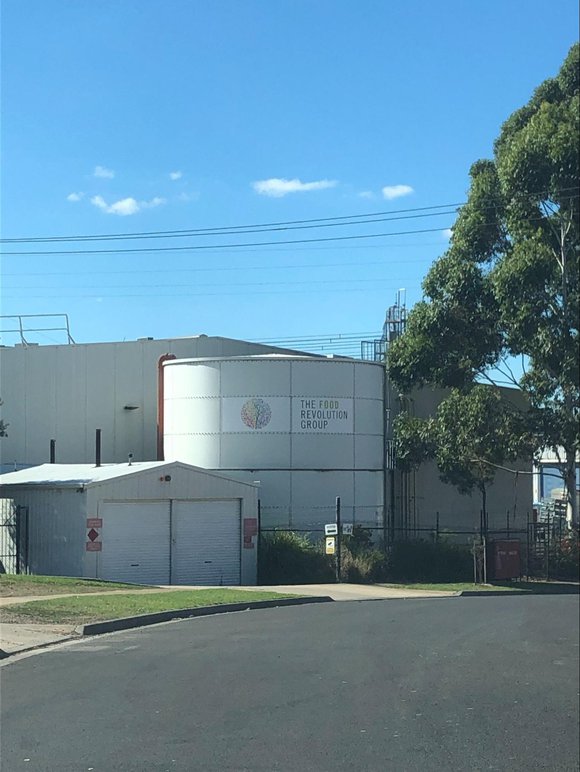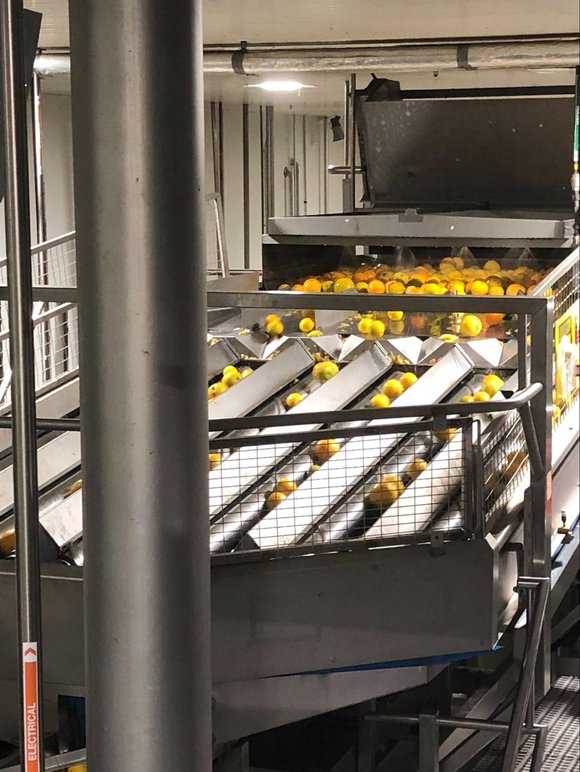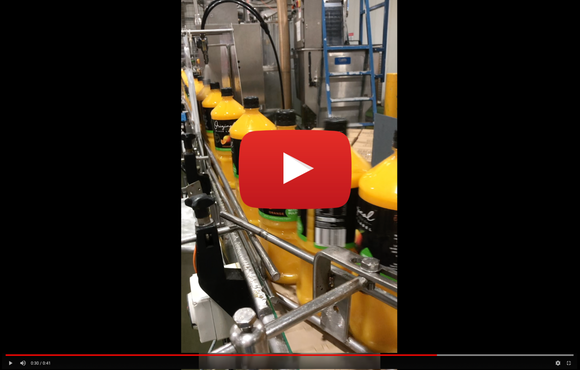FOD is Finally Cash Flow Positive - Now for the Growth Phase
Disclosure : The authors of this article and owners of Next Investors, S3 Consortium Pty Ltd, and associated entities, own 7,857,143 FOD shares and the Company’s staff own 306,722 FOD shares at the time of publication. S3 Consortium Pty Ltd has been engaged by FOD to share our commentary and opinion on the progress of our investment in FOD over time.
Beverage manufacturing company The Food Revolution Group (ASX:FOD) has reached a major milestone becoming ‘cash flow positive’ — a strong signal that the company is successfully implementing its turnaround plans.
We first invested in FOD just over a year ago, in March 2021, and this is the first cash flow positive quarter we’ve seen.
At the time, we had the view that FOD — which sells premium fruit juices and juice products in major supermarkets Coles and Woolworths — was "an emerging turnaround story".
Its flagship brand, Black Label Orange Juice Co. was steadily gaining market share and we liked the growth potential on offer.
Since then, FOD has made strategic changes to its sales mix including the release of three new products, reduced costs via improved efficiencies, and improved its strategy around raw materials procurement.
And the market has started to take note. FOD’s share price is now up more than 50% from its early March 2022 low point as investors catch on to its improving financial performance.
Notably, significant shareholder and Geelong-based Batman Investments has been buying shares on-market, and now owns 7.12% of FOD.
FOD is on a Fix → Reset → Growth trajectory.
Early signs of the transition from the ‘Reset’ phase to the ‘Growth’ phase is that the company is operating cash flow positive - and that's where FOD is today.
The ‘Growth’ phase is where the share price generally re-rates, as the broader market takes notice of improved business performance.
This is because the business has free cash flow to re-invest into equipment, advertising, new product development, which all drives further growth in a snowball effect that drives even more growth.
FOD reported $11.5M in revenue (up 14.3% from the previous corresponding quarter last year) and was cash flow positive for the quarter, yet the company is still capped at under $25M, leaving plenty of upside potential.
FOD’s business momentum and the share price stability over the last three months suggests to us that the company is primed for the ‘Growth’ phase of its turnaround story.
A Day Out: The FOD Factory Tour
Two weeks ago the analyst team at Wise-Owl went to FOD’s facilities in Mill Park Victoria for an inside look into the company’s operations and to speak to CEO Steven Cail face-to-face about the future of the business.
Driving into the facility we were met with the big ‘The Food Revolution Group’ logo, a sign that this was not going to be your typical work day.

After a brief overview of the FOD business operations from Steve (and some morning juice) we began the facility tour with Operations Director Anthony Rosano.
Hair nets, masks, ear-plugs and boots were our outfits for the day.

We walked through about four or five warehouse rooms, each with a different purpose - the packaging room, the bottling room, the juicing room and the storage room.
It was interesting to learn about the different types of machinery the FOD used, and how FOD has a number of juicing machines that can create bespoke juicing combinations on a large scale.

Entering the juicing room we were immediately hit with a strong smell of oranges — around 140,000 tonnes of oranges pass through the facility each day, producing around 70,000 litres of juice.
That’s a lot of oranges.
This room was impressive. With lots of conveyor belts and pulleys, it was a cornucopia of engineering technology.

The other section that stood out was the bottling facility, where the bottles are stickered, filled and packaged, ready for shipping to stores.

Finally, we got a peek at what FOD could become if it scaled up operations.
FOD still has plenty of space to scale up if needed, and has options in regard to new product development with machinery available for bespoke juicing combinations. There’s plenty of room to grow its facilities and develop new products and flavour combinations.
Although this part of the facility was empty for the most part, it was also the most exciting as it showcased the potential for FOD to expand its business.
We put together a short video of our time at the facility with some highlights of the day:

At the end of the tour, we were lucky enough to try FOD’s new plant based smoothies which, as of this quarter, are available in Coles stores nationwide.

They were delicious, and impressively, had the consistency of a traditional smoothie while being entirely plant based and dairy-free.
Seeing FOD’s operations in person and with the support of two consecutive quarters of strong financial performance, we think that our investment is tracking well, despite being down from our initial entry.
FOD has spent the last 12 months setting the foundations for the business and we think it’s well placed to navigate the upcoming inflationary environment that is affecting businesses across Australia.
Inflation has become an issue as the world recovers from the pandemic and the fallout from the Ukraine/Russia war.
As inflation rises, investors generally turn to established businesses with cash flows and revenues. Which is why we think that FOD is well placed to continue its current momentum.
Inflation is, however, directly affecting the fast moving consumer goods (FMCG) industry.
Raw material inputs and transport costs are increasing, which may have an effect on FOD in the near term.
Later in this note we’ll deep dive into what inflation means for the FMCG industry and how FOD can navigate this changing economic landscape.
But first, a quick recap of FOD’s quarterly...
Our thoughts on FOD’s March Quarterly Performance
January to March tends to be a strong quarter for FOD.
It’s summer time, and juice sales are up as the weather is warm.
For that reason it is important to compare FOD’s financial performance to the same quarter last year, rather than the previous quarter.
On this basis, FOD quarterly revenue of $11.5M was up 14.3% compared to the same quarter last year — which is indicative of new products developments leading to increased sales revenue.
FOD’s flagship Original Juice Co. growth outperformed the market, growing 5.8% and the Juice Lab wellness shots maintained a 50% market share despite a number of competitors entering the space.
That result comes despite FOD’s resilience being tested this quarter by a number of external challenges. These included staff shortages due to COVID-19, the Queensland floods, supply chain issues and rising inflation.
Yet in the face of those challenges, FOD’s execution remained steadfast and it delivered net cash inflows — a major milestone for any turnaround company.
The main milestone for FOD was that net cash flow from operating activities was $449K, which rendered the company cash flow positive for the first time since our investment in March 2021.
Why is this milestone so important?
FOD is working through a major business turnaround and is on a Fix → Reset → Growth trajectory.
Early signs of the transition from the ‘Reset’ phase to the ‘Growth’ phase is that the company is operating cash flow positive.
Generally the ‘Growth’ phase is where the company’s share price re-rates, as investors trust that a company’s growth is sustainable.
Being cash flow positive allows FOD to reinvest back into the business, improving upon things like equipment, advertising, new product development, which all drives further growth in a snowball effect that drives even more growth.
However, if the foundations of the business are not set, then this reinvestment into the business can be wasted.
Often companies that try to ‘Grow’ before they have ‘Fixed’ or ‘Reset’ their internal systems, will need to continuously tap the market for funds.
That’s why being cash flow positive is so important — it signals to the market that the company no longer needs to raise capital to operate (the company may still raise to fund a big acquisition or new equipment, etc).
At the end of the quarter, FOD had a cash balance of $0.9M with an overdraft facility of $1M.
Cash flows are cyclical for FOD due to procurement timing and consumers preferring to drink juice during the summer months. Therefore, the possibility that FOD does not follow up with another cash flow positive quarter is factored into our expectations.
That said, we still want to see revenue growth over the corresponding quarter last year, and growth beyond that of the juice market.
How inflation is affecting the FMCG industry
On Wednesday, the RBA announced that quarterly inflation had come in much higher than expected. The CPI jumped to 5.1% in the quarter — the highest since 2001 and well above the RBA’s February forecast that CPI would peak at 3.75% in mid-2022.
What does this mean?
The CPI or Consumer Price Index, is a measure that examines the average price of a basket of goods and services.
As inflation increases, so does the price of consumer goods / household things such as petrol, electricity, bread and oranges.
For manufacturing companies like FOD, it means that the costs like raw materials, packaging, transport and electricity are increasing.
This is happening across the Fast Moving Consumer Goods (FMCG) industry, and suggests that grocery prices have increased for consumers.

Coles CEO Steven Cain (not to be confused with FOD’s CEO Steven Cail) commented on this development yesterday, saying "inflation on supermarket shelves is just getting started" and the process of price negotiations has commenced.
In September 2020, FOD secured an important price increase with major supermarket retailers to support its growth.
Given its established relationships with the likes of Coles, Woolworths and Metcash, we think that FOD is well positioned to secure another price increase if needed in this inflationary environment.
However, with underlying fundamentals of the business in place and strong sales and growth for the quarter, FOD may not need to go down this route.

The FMCG sector has also been affected by supply chain issues and labour shortages caused by COVID-19. Bega Cheese suggested that COVID-19 will cost the company over $40M for the year .
The effects of COVID-19 will hopefully be alleviated for the FMCG industry as state governments ease the isolation rules for COVID-19 ‘close contacts’.
This quarter FOD has shown resilience in the face of labour disruptions, floods and inflation pressures. And we expect the strong foundations that FOD has set to hold the company in good stead as the world moves on from COVID-19.
What is next for FOD?
With another strong quarterly performance under its belt, our attention turns to FOD’s consolidation of newly launched products.
Because of the extended shelf life of FOD’s new products (smoothies, juice shots and carbonated wellness cans), we think that there is an opportunity to expand distribution through service stations and convenience stores.
FOD is currently selling their products through three main channels - Coles, Woolworths and Metcash (and some products through Aldi), which provides a level of consistency to the sales results.
However, for FOD to accelerate its growth, we think that it needs to get its products out there to more people.
We’ll also be monitoring the inflation situation, and pay close attention to FOD’s performance next quarter to see if operations have been affected.
Our FOD Investment Memo for 2022
Below is our 2022 Investment Memo for FOD where you can find a short, high level summary of our reasons for investing.
The ultimate purpose of the memo is to record our current thinking as a benchmark to assess the company's performance against our expectations 12 months from now.
In our FOD Investment Memo you’ll find:
- Key objectives for FOD in 2022
- Why we invested in FOD
- What the key risks to our investment thesis are
- Our investment plan

Disclosure: The authors of this article and owners of Next Investors, S3 Consortium Pty Ltd, and associated entities, own 7,857,143 FOD shares and the Company’s staff own 306,722 FOD shares at the time of publication. S3 Consortium Pty Ltd has been engaged by FOD to share our commentary and opinion on the progress of our investment in FOD over time.
General Information Only
S3 Consortium Pty Ltd (S3, ‘we’, ‘us’, ‘our’) (CAR No. 433913) is a corporate authorised representative of LeMessurier Securities Pty Ltd (AFSL No. 296877). The information contained in this article is general information and is for informational purposes only. Any advice is general advice only. Any advice contained in this article does not constitute personal advice and S3 has not taken into consideration your personal objectives, financial situation or needs. Please seek your own independent professional advice before making any financial investment decision. Those persons acting upon information contained in this article do so entirely at their own risk.
Conflicts of Interest Notice
S3 and its associated entities may hold investments in companies featured in its articles, including through being paid in the securities of the companies we provide commentary on. We disclose the securities held in relation to a particular company that we provide commentary on. Refer to our Disclosure Policy for information on our self-imposed trading blackouts, hold conditions and de-risking (sell conditions) which seek to mitigate against any potential conflicts of interest.
Publication Notice and Disclaimer
The information contained in this article is current as at the publication date. At the time of publishing, the information contained in this article is based on sources which are available in the public domain that we consider to be reliable, and our own analysis of those sources. The views of the author may not reflect the views of the AFSL holder. Any decision by you to purchase securities in the companies featured in this article should be done so after you have sought your own independent professional advice regarding this information and made your own inquiries as to the validity of any information in this article.
Any forward-looking statements contained in this article are not guarantees or predictions of future performance, and involve known and unknown risks, uncertainties and other factors, many of which are beyond our control, and which may cause actual results or performance of companies featured to differ materially from those expressed in the statements contained in this article. S3 cannot and does not give any assurance that the results or performance expressed or implied by any forward-looking statements contained in this article will actually occur and readers are cautioned not to put undue reliance on forward-looking statements.
This article may include references to our past investing performance. Past performance is not a reliable indicator of our future investing performance.

